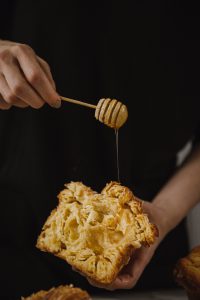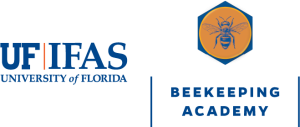Unveiling Honey-Laundering: Ensuring Authenticity in Your Honey Purchase
By James Murray

Image from Unsplash
Thunder Bay – Business – Almost everyone loves the taste of honey. In an age where food authenticity is increasingly scrutinized, a lesser-known but significant issue has emerged in the honey industry: honey-laundering. This term refers to the illegal practice of mislabeling the origin of honey or adulterating it with other substances. As consumers, understanding honey-laundering and knowing how to ensure the authenticity of the honey you purchase is crucial.
What is Honey-Laundering?
Honey-laundering primarily involves two deceptive practices:
Mislabeling Origin: Some manufacturers label their honey as being from a particular region or country, often one known for high-quality honey, when it actually originates from somewhere else. This practice is commonly used to circumvent import tariffs or bans from countries with a history of contamination in honey production.
Adulteration: This involves diluting pure honey with other cheaper sweeteners like high-fructose corn syrup, rice syrup, or other sugary substances. Adulterated honey is less expensive to produce but is sold as pure honey, deceiving consumers and undercutting honest producers.
Impact of Honey-Laundering
Honey-laundering not only deceives consumers but also has broader implications:
Economic Impact: It undermines legitimate beekeepers and honey producers who struggle to compete with the lower prices of adulterated products.
Health Risks: Adulterated honey can contain harmful antibiotics or heavy metals, posing health risks to consumers.
Environmental Concerns: Mislabeling origin can mask environmentally harmful production practices in some regions.
How to Ensure You’re Buying Real Honey
Read Labels Carefully: Check for country of origin and ingredient list. Authentic honey should have no other ingredient except honey.
Buy Local: Purchasing from local beekeepers or farmers’ markets can increase the likelihood of getting pure honey. It also supports local agriculture.
Certifications and Tests: Look for certifications like “True Source Certified” which ensure the traceability of honey. Some companies also put QR codes on their products that provide detailed sourcing information.
Price Point: If the price seems too good to be true, it probably is. Producing genuine, pure honey is a labor-intensive process, which is reflected in its cost.
Consistency and Texture: Pure honey tends to crystallize over time, whereas adulterated honey will remain syrupy.
Water Test: Put a drop of honey in water. Pure honey will settle at the bottom, while adulterated honey will start dissolving.
Flame Test: Dip a matchstick in honey and try to light it. If it lights easily, the honey is pure. Adulterated honey will prevent the match from lighting due to moisture from additives.
Trust Your Taste: Pure honey has a complex flavour profile that changes slightly with each batch, reflecting the flowers from which the nectar was harvested.
Conclusion
Honey-laundering is a global issue with significant impacts on consumers, producers, and the environment. By being vigilant and informed, consumers can play a crucial role in combating this practice. Always opt for transparency, traceability, and trustworthiness when it comes to purchasing honey. Remember, choosing authentic honey not only ensures you enjoy a quality product but also supports ethical and sustainable practices in the honey industry.
We are here to share current happenings in the bee industry. Bee Culture gathers and shares articles published by outside sources. For more information about this specific article, please visit the original publish source: NetNewsLedger – Unveiling Honey-Laundering: Ensuring Authenticity in Your Honey Purchase








